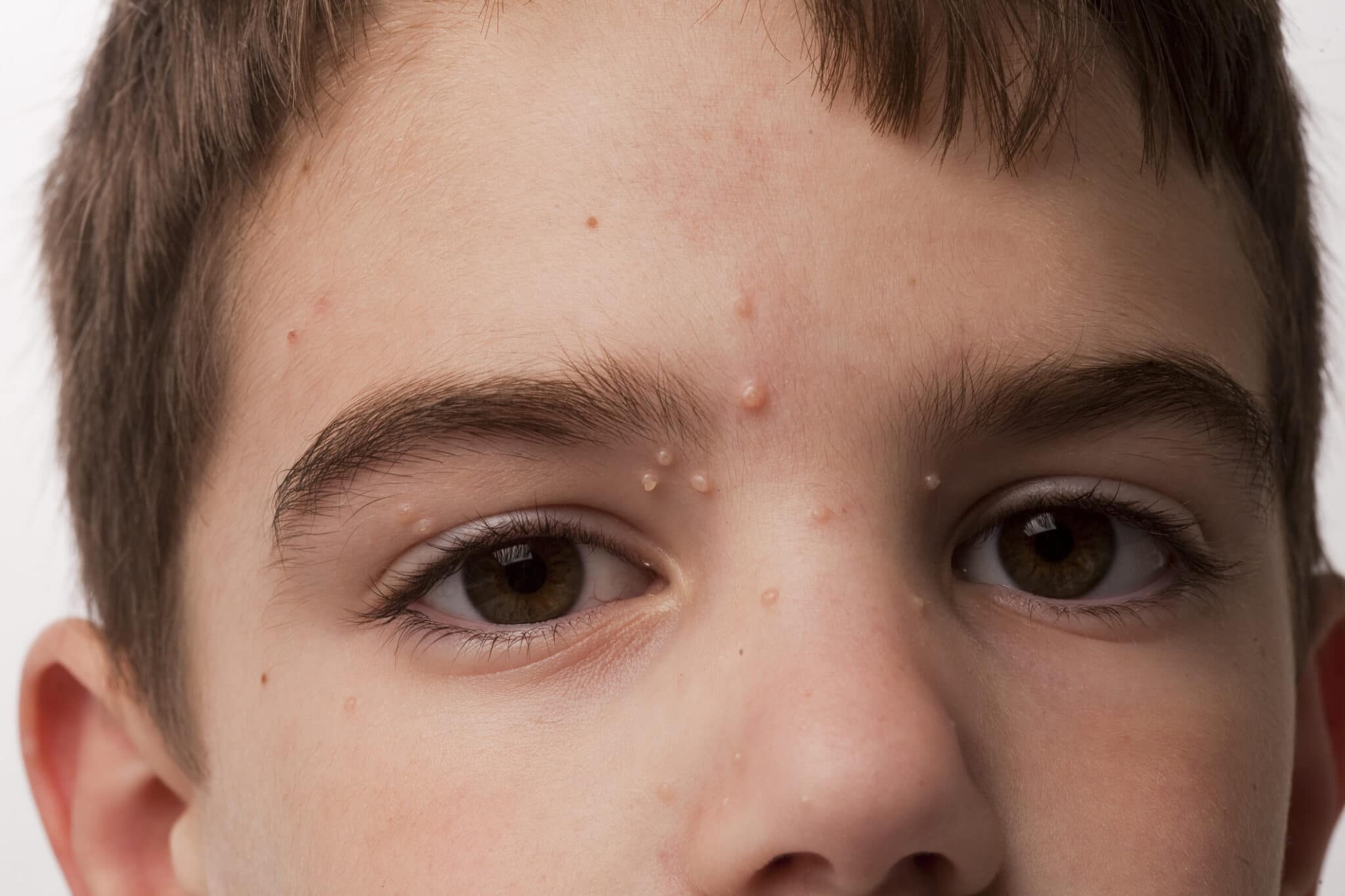Molluscum Contagiosum: Symptoms, Causes, Treatment
What are the symptoms of molluscum contagiosum?
Molluscum contagiosum is a common viral infection of the skin that causes small, raised bumps or lesions. The symptoms of molluscum contagiosum can vary depending on the individual, but common symptoms include:
- Small, Flesh-Colored Bumps: The primary symptom of molluscum contagiosum is the development of small, raised bumps on the skin. These bumps are typically flesh-colored, dome-shaped, and have a dimpled center.
- Bumps on the Face, Neck, Arms, and Hands: Molluscum contagiosum can occur anywhere on the body, but it is most commonly found on the face, neck, arms, and hands. The bumps can also appear on other parts of the body, including the trunk, thighs, and genital area.
- Itching: The bumps caused by molluscum contagiosum can sometimes be itchy, although they are usually painless.
- Spread of Bumps: The bumps caused by molluscum contagiosum are highly contagious and can spread to other areas of the body through scratching or contact with contaminated objects or surfaces.
- Inflammation: In some cases, the bumps caused by molluscum contagiosum can become inflamed, red, or sore.
- Painless Bumps: The bumps caused by molluscum contagiosum are typically painless, although they can become irritated or sore if they are scratched or rubbed.
It’s important to note that molluscum contagiosum is usually a harmless condition that tends to resolve on its own without treatment. However, it can be bothersome or embarrassing for some individuals, and treatment options are available by specialists to help remove the bumps and prevent them from spreading to others.
What are the causes of molluscum contagiosum?
Molluscum contagiosum is caused by a poxvirus called the molluscum contagiosum virus (MCV). The virus is highly contagious and is spread through direct skin-to-skin contact with an infected person or by contact with contaminated objects or surfaces. The virus can also spread through sexual contact or from a mother to her child during childbirth.
The virus enters the skin through tiny breaks or abrasions in the skin’s surface and infects the skin cells, leading to the development of the characteristic bumps or lesions of molluscum contagiosum. The virus can be spread to other parts of the body by scratching or picking at the bumps, which can also lead to the spread of the virus to other people.
Molluscum contagiosum is more common in children, but it can affect people of any age. The virus is more likely to spread in settings where there is close contact between people, such as schools, daycares, and sports teams.
What is the treatment for molluscum contagiosum?
Treatment for molluscum contagiosum is typically not necessary, as the condition usually resolves on its own without causing any long-term health problems. However, treatment may be recommended for individuals who have large or persistent lesions, or who are at risk of spreading the virus to others. Some common treatment options for molluscum contagiosum include:
- Topical Treatments: Over-the-counter or prescription topical treatments, such as imiquimod cream or podofilox gel, may be applied directly to the lesions to help them clear up more quickly.
- Cryotherapy: Cryotherapy involves freezing the lesions with liquid nitrogen to destroy the affected skin cells. This treatment is usually performed in a healthcare provider’s office.
- Curettage: Curettage involves scraping the lesions off the skin using a sharp instrument called a curette. This procedure is usually done under local anesthesia.
- Laser Therapy: Laser therapy uses a laser to destroy the affected skin cells. This treatment is usually reserved for large or persistent lesions.
- Antiviral Medications: In some cases, antiviral medications may be prescribed to help clear up the lesions more quickly, especially in people with weakened immune systems.
It’s important to note that treatment for molluscum contagiosum is not always necessary, and in many cases, the lesions will clear up on their own over time. However, if treatment is needed, it is best to consult with a healthcare provider to determine the most appropriate course of action based on the individual’s specific circumstances.




